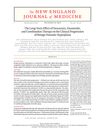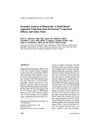Economic Issues in the Treatment of Benign Prostatic Hyperplasia
September 2006
in “
European Urology Supplements
”
TLDR Combination therapy for BPH is cost-effective, especially for men with larger prostates.
In the early 2000s, the treatment of benign prostatic hyperplasia (BPH) was primarily dominated by transurethral resection of the prostate (TURP), despite the rise of medical therapies and less invasive procedures. Medical treatments, such as 5α-reductase inhibitors, offered a cost-effective alternative by reducing the risk of acute urinary retention and surgical interventions, although long-term costs and benefits were not fully understood due to limited data. The TRIUMPH project, involving 5,057 men from six European countries, revealed that medication accounted for 75% of the average 1-year treatment cost of 858 Euros per patient. The Proscar Long-Term Efficacy and Safety Study (PLESS) demonstrated that finasteride could reduce surgical needs, recouping 20% of its costs over four years. The study underscored the cost-effectiveness of combination therapy, particularly for men with larger prostates and higher PSA levels, but noted limitations due to the exclusion of indirect costs and patient preferences. The research called for ongoing studies and adaptable economic models to better understand the financial implications of BPH treatments, especially as the aging population was expected to increase demand.




